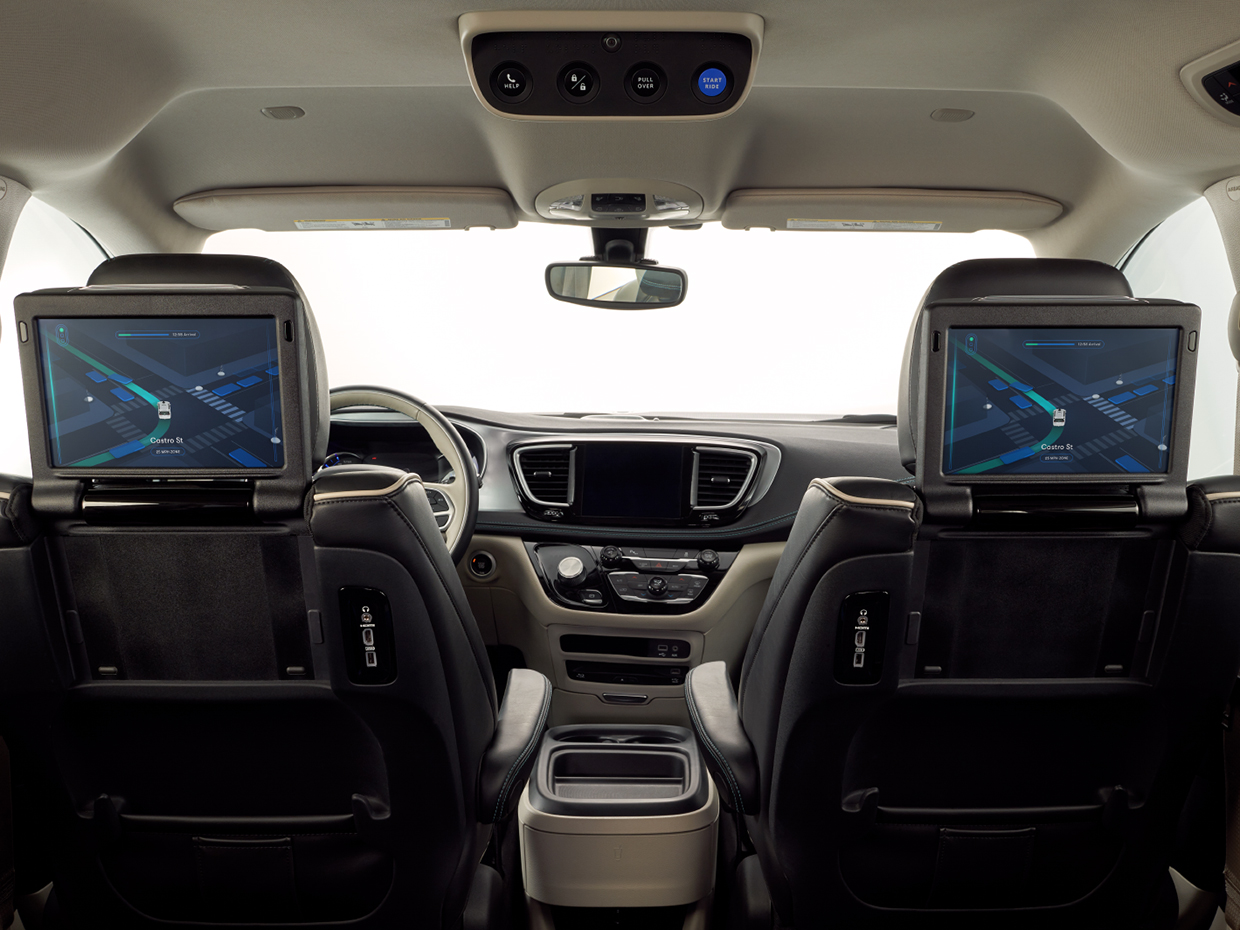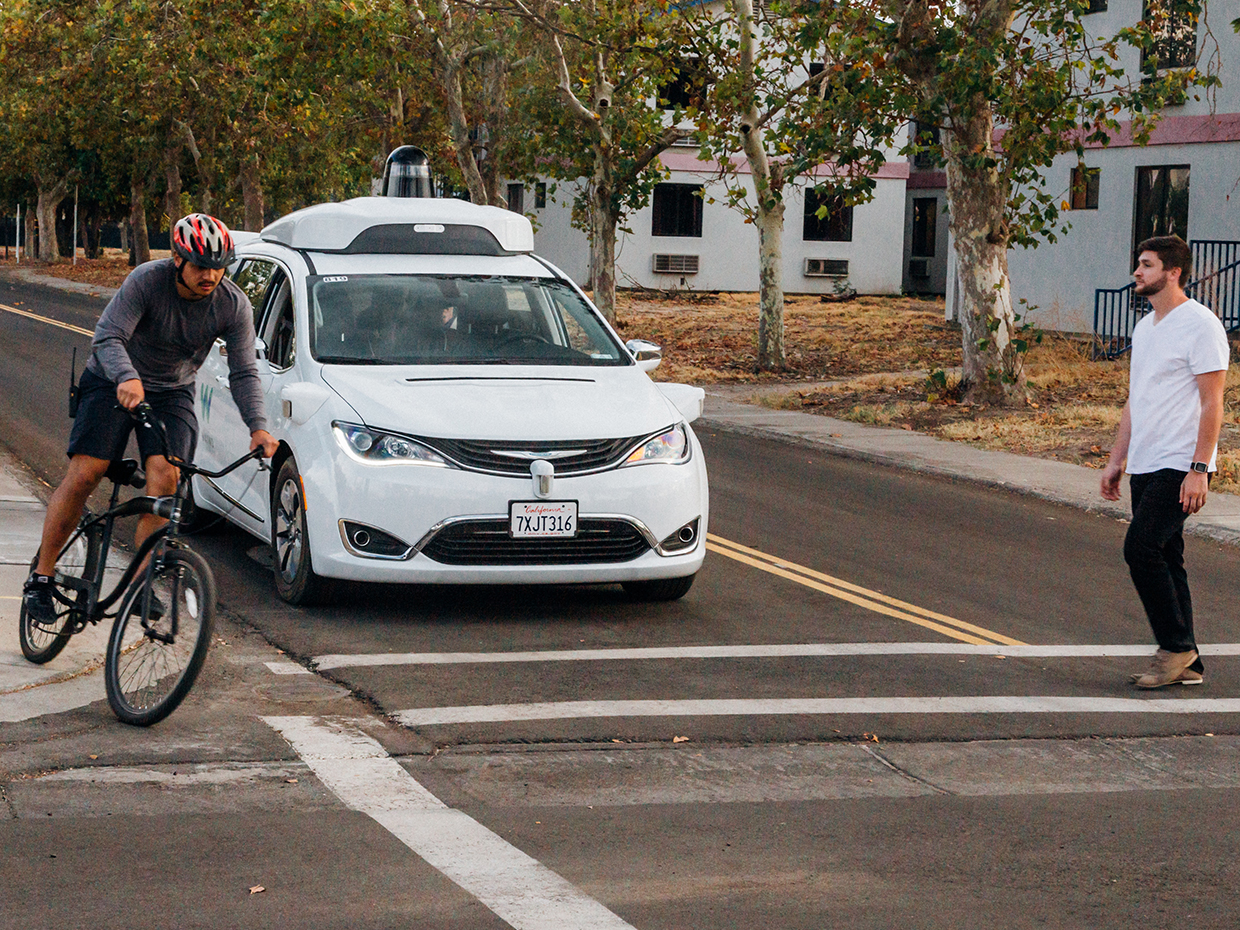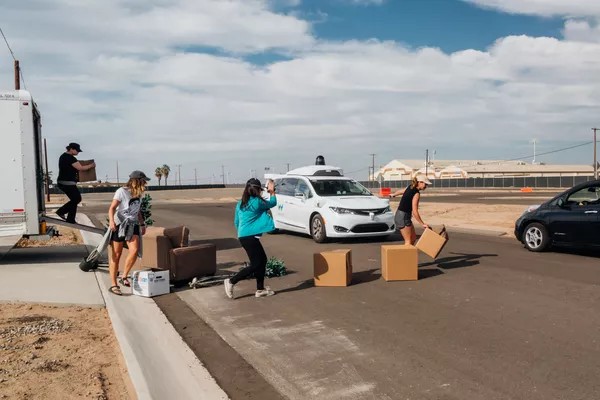Waymo autopilot will not give a person control in an emergency

12-inch displays in the cabin of Chrysler Pacifica minivans demonstrate an image that is designed to "build confidence" between passengers and the autopilot. The control panel is visible from above. Photo: Waymo
On October 30, 2017, Waymo (a project of Google, a subsidiary of Alphabet) held a demonstration for journalists of the latest achievements in the field of unmanned vehicles, which are almost ready to enter the real roads. At least, Waymo executive director John Krafcik expressed such confidence.
The demonstration took place at the Castle test range in Etuater, California, which is rented from the military. The Robokar drove along the routes, avoided unexpected obstacles and reacted correctly to other cars, cyclists and pedestrians - all these were actors hired by Waymo.

During the demonstration, Waymo autopilot successfully warmed up with cyclists and pedestrians. Photo: Waymo
The technology has already reached such a level that the Waymo tests have shown a paradoxical result: for the good of passengers, it’s safer when there is no human driver behind the wheel of a car. At least in an emergency. Previously, it was assumed that for the sake of safety a person should be in the driver's seat and “insure” the autopilot in case of emergency. But it turned out that the person in the driver's seat of an unmanned vehicle behaves like a passenger , that is, he sits relaxed, does not watch the road closely, sleeps or paints his nails. An emergency transfer of control to him will only make things worse.

Pedestrians scatter obstacles in front of the car. Photo: Waymo
Waymo engineers are confident that from a technical point of view, their autopilot surpasses the development of any other companies in the market. Probably, Tesla is considered first of all as competitors: “Sensors on the new generation of our machines are able to see further, more precisely and more accurately than everything that exists on the market,” said Dmitry Dolgov, vice president of the company and development director. “Instead of using [serial] components, possibly designed for other uses, we are creating everything from scratch, especially to achieve fourth-level autonomy.”
The autonomy of the fourth level does not imply the attention of the driver, ready to take control. That is, there may not be a person at the wheel at all or he may sleep in the backseat. In established geofences and / or road conditions, the car moves completely autonomously, and in the event of an unforeseen situation, it parks in a safe place.
Currently Tesla, Audi, Cadillac and several other companies have developed and demonstrated systems with 3rd-level autonomy, when the autopilot needs a driver behind the wheel, even if playing a computer game, watching a movie or turning away from the road (level “eyes off” ). Each automaker sets the time during which the driver must return to control. One of the first commercial vehicles with a level 3 autonomy system was the 2017 Audi A8 sedan.
Waymo also showed a new interface (pictured above) for interacting with the robotaxy of the future with passengers. The displays first show instructions for pressing the buttons on the control panel attached to the roof. Then on the screens shows the route of the car. The idea is that taxi passengers always feel control - a kind of “trust” must be established between the car and the person.

Sometimes pop-up messages appear on the displays with explanations: for example, when a car brakes to let a pedestrian pass.
Using the buttons, the passenger can lock or unlock the doors at any time or request "an immediate stop." Of course, the stop will be made in the nearest convenient place, and not in the middle of the road or next to large cacti, as it was during the robotics test in Phoenix (now cacti are already mapped, so the incident will not happen again).
It is possible to believe that Waymo is ahead of Tesla and other competitors in the development of unmanned vehicles. At least, Google and Alphabet have invested more than $ 1.1 billion in this project . The information became known during the ongoing litigation between Waymo and Uber about the theft of Waymo technologies. Since Uber has not yet begun to make a profit, Waymo suggests estimating the amount of damage based on the amount of investment in the development of these technologies.
All Articles